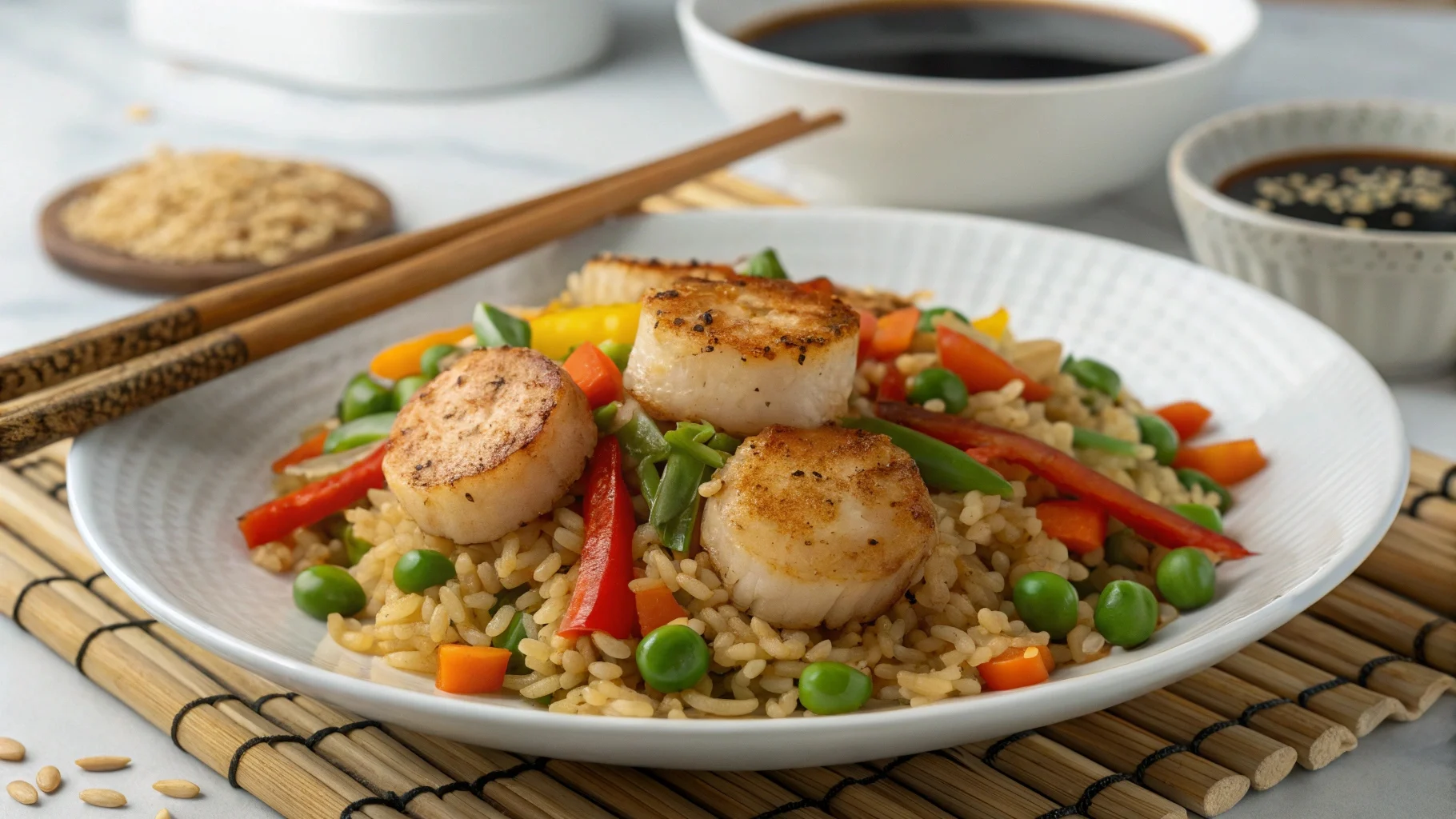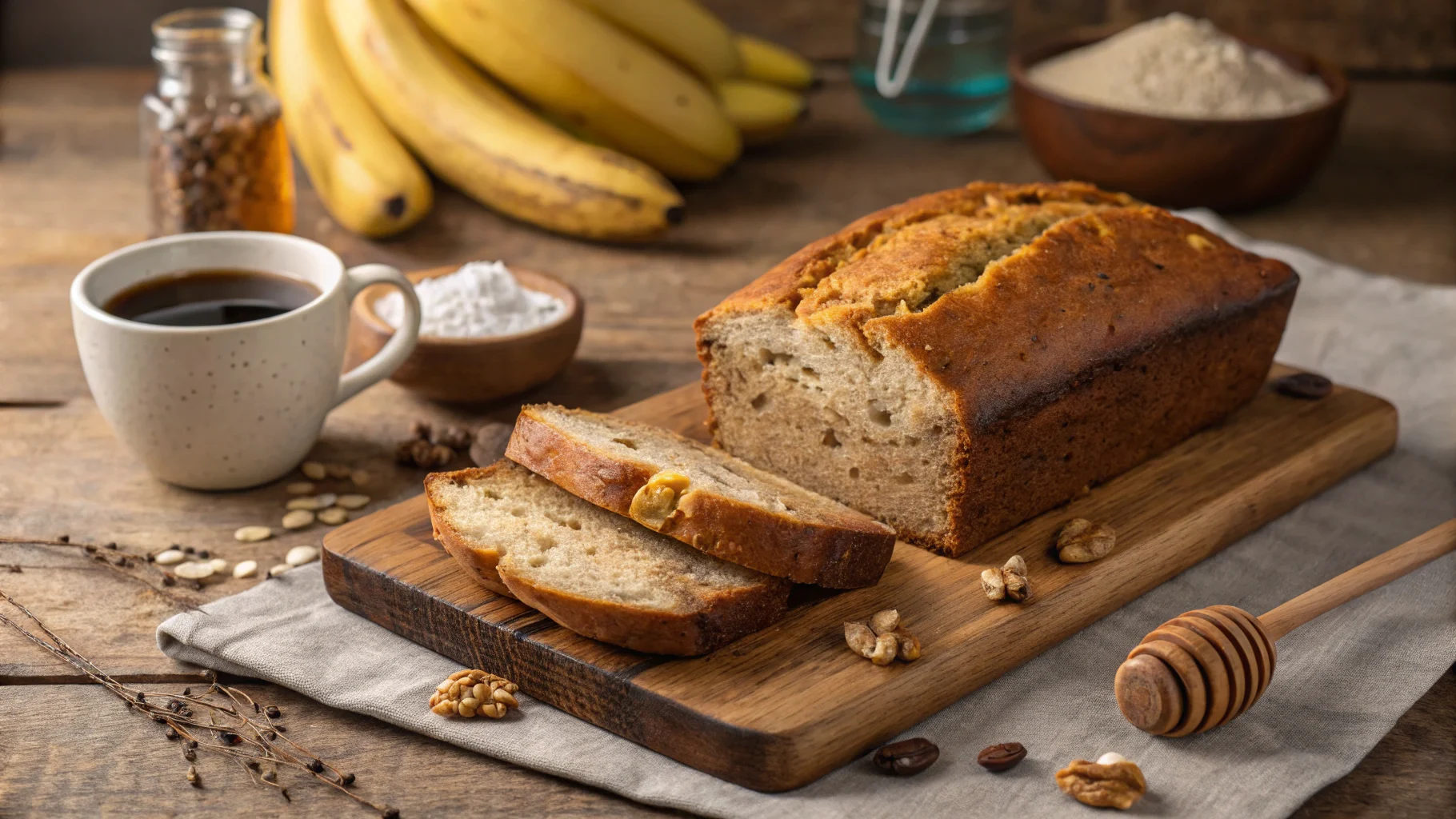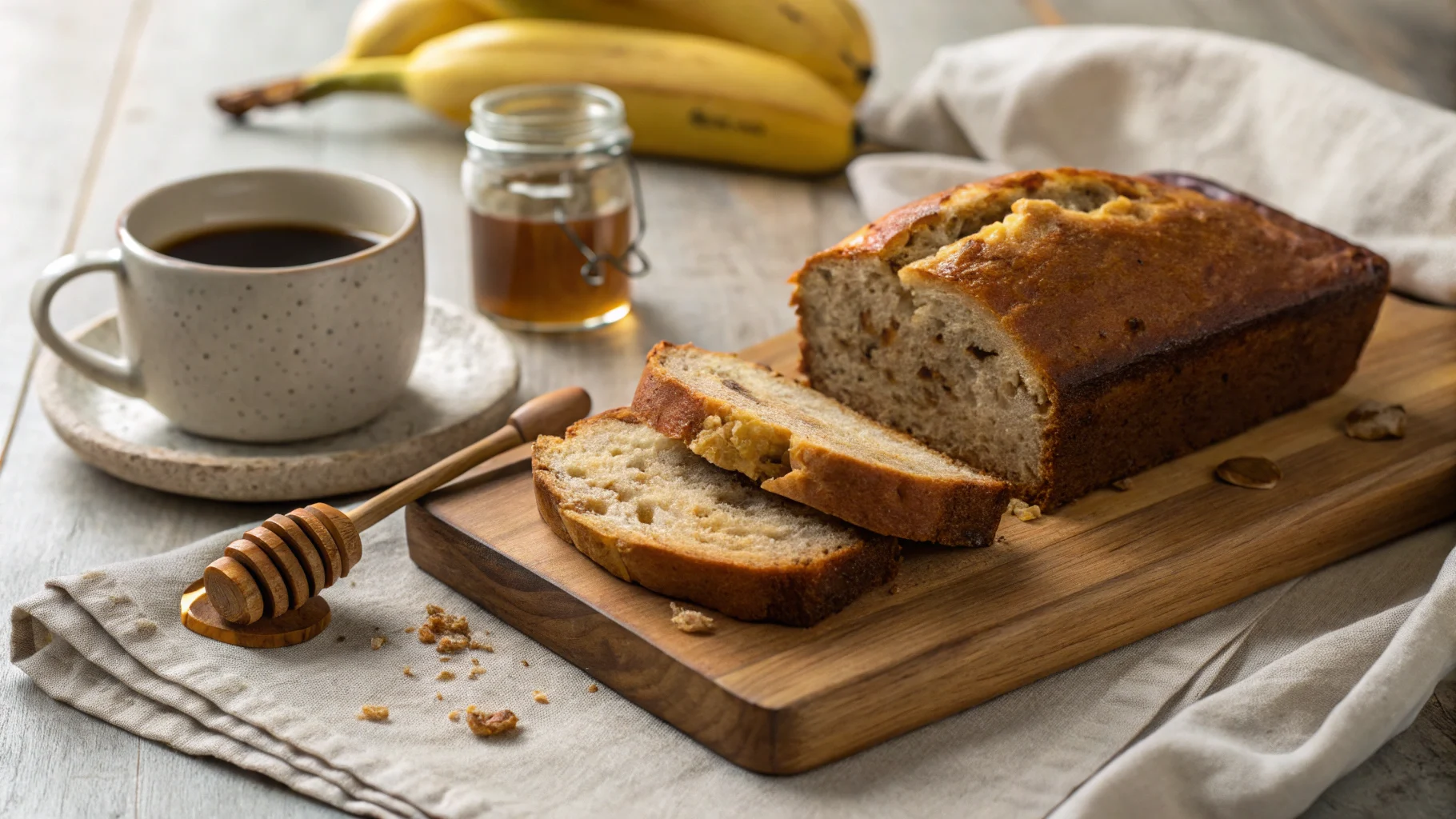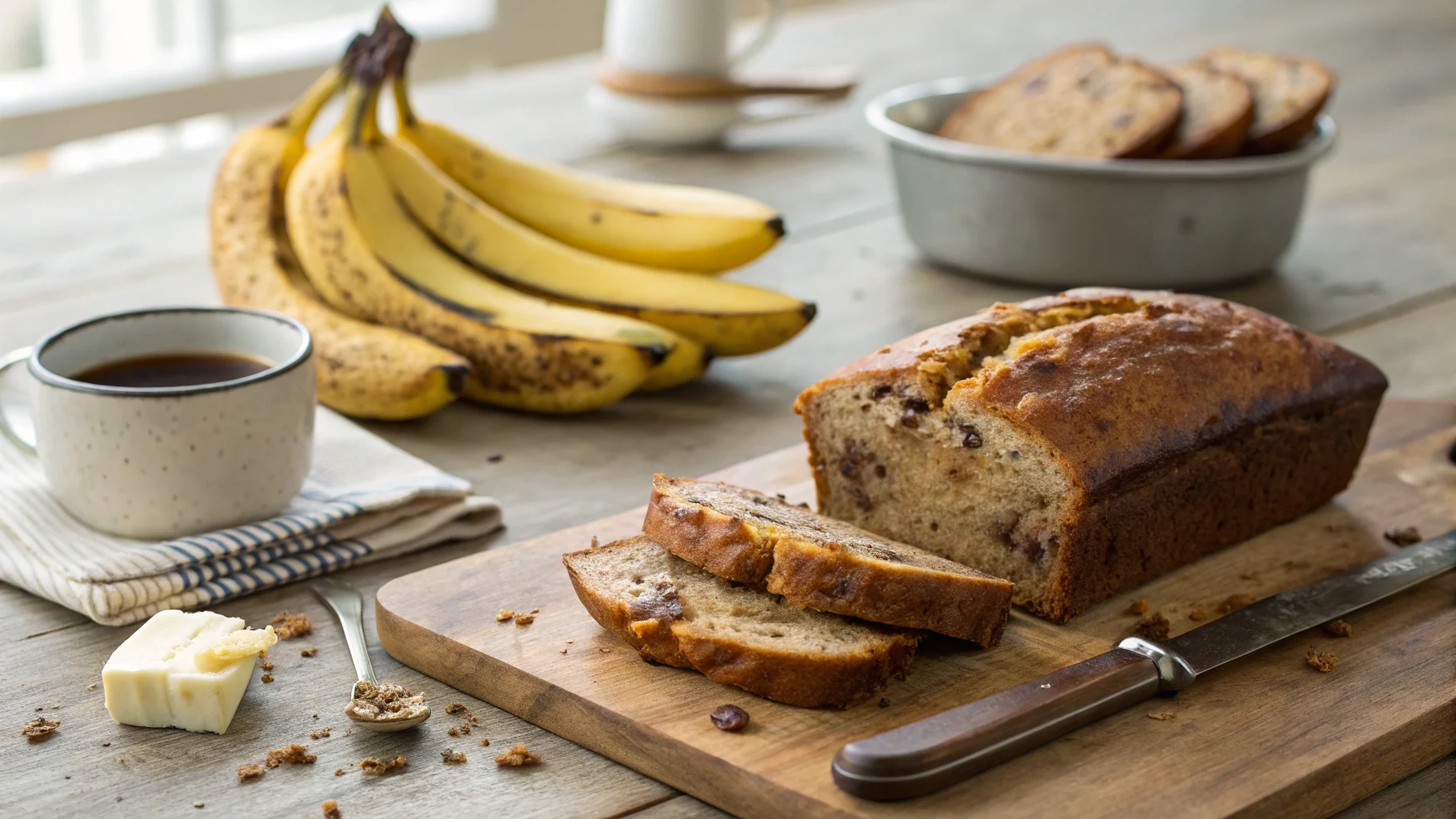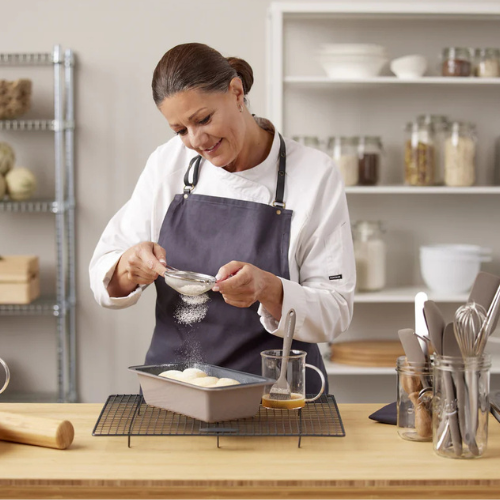Introduction
Discover the Fusion of Scallops and Stir-Fried Rice
If you’ve ever wondered how to add scallops to a stir fried rice recipe while keeping the dish flavorful and balanced, you’re in the right place. Combining scallops with stir-fried rice creates a harmony of tender, juicy seafood and savory, aromatic rice. This pairing is perfect for seafood lovers and anyone who enjoys experimenting with new twists on classic recipes.
Scallops, known for their sweet and delicate flavor, bring a level of sophistication to this humble dish. Whether you’re looking to impress dinner guests or whip up a satisfying weeknight meal, this recipe strikes the perfect balance of simplicity and elegance.
Why Scallops Elevate Your Fried Rice Experience
Scallops are the ingredient that takes stir-fried rice to the next level. Their soft, buttery texture contrasts beautifully with the crisp edges of fried rice. Additionally, scallops absorb the seasonings in the dish, blending seamlessly with soy sauce, garlic, and ginger.
For an added bonus, scallops are rich in protein and low in fat, making this recipe a healthy option for seafood enthusiasts. Once you try scallops in your fried rice, you’ll see why this combination has become a crowd-pleaser for home cooks and chefs alike.
Understanding Scallops and Their Role in Fried Rice
Types of Scallops Suitable for Cooking
Differentiating Between Bay and Sea Scallops
When it comes to scallops, there are two main types to consider: bay scallops and sea scallops.
- Bay Scallops
- Small and tender with a slightly sweet flavor.
- Ideal for quick-cooking dishes, but may not provide the meaty texture some prefer in fried rice.
- Sea Scallops
- Larger and meatier, with a firmer texture.
- These are perfect for stir-frying because they hold up well and develop a beautiful golden crust when seared.
If you want a balance of flavor and texture in your dish, sea scallops are the way to go.
Selecting the Best Scallops for Stir-Frying
To ensure the best results, look for the following when purchasing scallops:
- Freshness: Scallops should smell sweet, not fishy.
- Dry Scallops: Choose “dry” scallops rather than “wet” ones. Wet scallops are treated with chemicals that affect their ability to sear properly.
- Size: Opt for uniform sizes to ensure even cooking.
Preparing Scallops for Cooking
Cleaning and Handling Scallops Safely
Cleaning scallops properly is a crucial step in the process. Here’s how to do it:
- Rinse the scallops gently under cold water to remove sand and debris.
- Pat them dry with a paper towel to prepare them for searing.
- Remove the tough muscle on the side of each scallop—it’s easy to peel off with your fingers.
By taking these steps, you’ll ensure that your scallops cook evenly and taste fresh.
Marinating Techniques to Enhance Flavor
A simple marinade can highlight the natural sweetness of scallops. Combine:
- 1 tablespoon of soy sauce
- 1 teaspoon of sesame oil
- A pinch of salt and pepper
Let the scallops sit in the marinade for 15-20 minutes. This step enhances their flavor without overpowering the dish. However, avoid over-marinating as it can alter the texture of the scallops.
Crafting the Perfect Stir-Fried Rice Base
Selecting the Ideal Rice for Stir-Frying
Importance of Using Day-Old Rice
Using day-old rice is a game-changer when learning how to add scallops to a stir fried rice recipe. Freshly cooked rice tends to be sticky, making it difficult to achieve the signature texture of fried rice. Day-old rice, on the other hand, has a drier texture, which helps prevent clumping.
Pro Tip: Spread fresh rice on a baking sheet and refrigerate it for at least 2 hours if you don’t have pre-cooked rice.
Choosing Between Jasmine, Basmati, or Short-Grain Rice
The type of rice you use can significantly impact the dish.
- Jasmine Rice: Light and fragrant, ideal for Asian-inspired recipes.
- Basmati Rice: Long-grain and slightly nutty, offering a unique twist.
- Short-Grain Rice: Chewier and stickier, perfect if you prefer a heartier texture.
Essential Vegetables and Aromatics
Classic Vegetable Additions
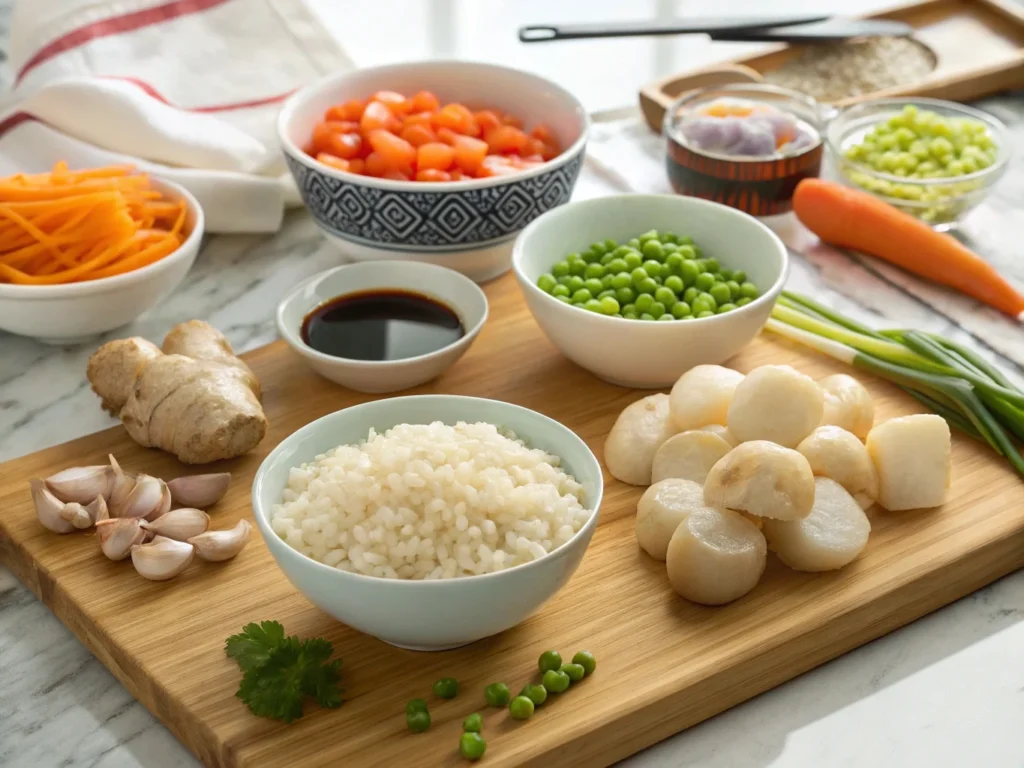
Vegetables add both color and nutrition to your stir-fried rice. Popular choices include:
- Peas
- Diced carrots
- Bell peppers
- Green onions
These vegetables provide crunch and sweetness, complementing the tender scallops beautifully.
Utilizing Garlic, Onions, and Ginger for Depth of Flavor
Garlic, onions, and ginger are must-have aromatics for any stir-fried rice recipe. Their bold flavors create a savory base that enhances the sweetness of the scallops.
- Garlic: Mince it finely for even distribution.
- Onions: Choose red onions for sweetness or yellow onions for a milder taste.
- Ginger: Use fresh ginger for a zesty kick.
Step-by-Step Guide to Scallop Stir-Fried Rice
Cooking the Scallops
Achieving the Perfect Sear
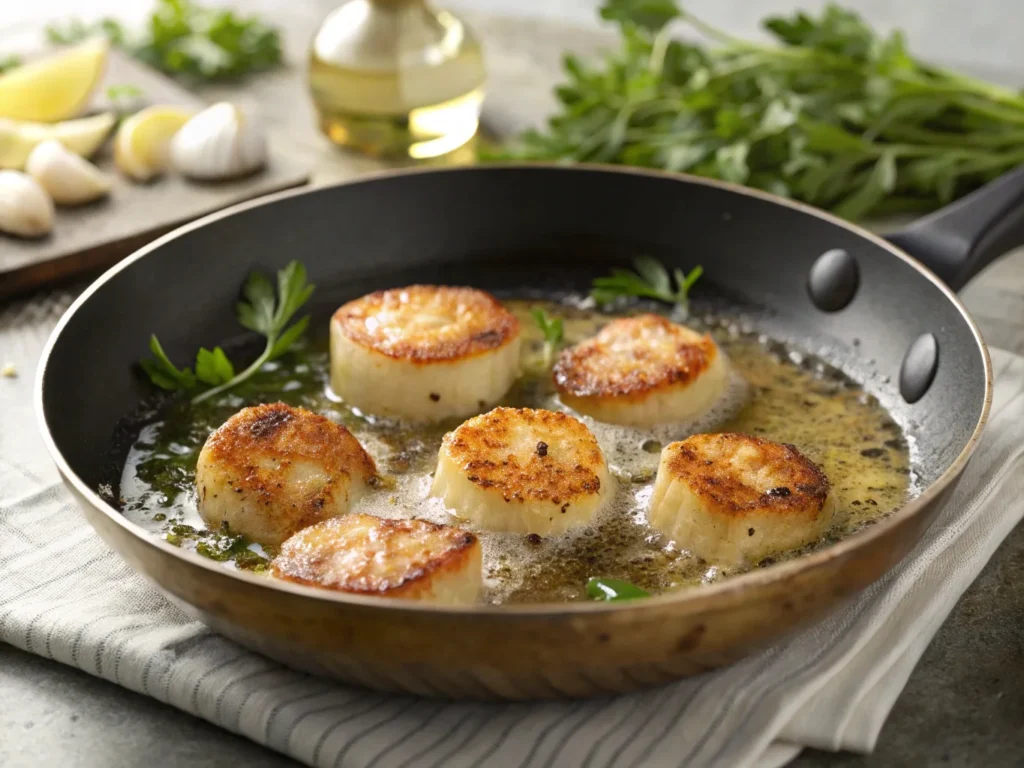
The secret to perfectly cooked scallops lies in the sear. Here’s how:
- Heat a non-stick pan over medium-high heat. Add a tablespoon of oil.
- Once the pan is hot, place the scallops in a single layer.
- Cook for 2-3 minutes on one side without moving them. Flip and cook for another 1-2 minutes.
A golden crust will form, locking in the scallops’ juices and ensuring maximum flavor.
Timing Considerations to Avoid Overcooking
Overcooking scallops can turn them rubbery. To avoid this:
- Remove scallops from the heat once they turn opaque.
- Cook them just long enough to maintain their tender, buttery texture.
Assembling the Stir-Fried Rice
Stir-Frying Vegetables and Rice
- Heat oil in a large wok or skillet.
- Add garlic, onions, and ginger. Cook until fragrant.
- Toss in your vegetables and stir-fry for 3-5 minutes.
- Push the vegetables to the side and add the rice, breaking up any clumps.
Stir-frying ensures even cooking and flavor distribution.
Incorporating Scallops into the Dish
Once the rice and vegetables are heated through:
- Add the cooked scallops back into the pan.
- Gently toss everything together, allowing the flavors to meld.
Seasoning and Final Touches
Balancing Soy Sauce, Oyster Sauce, and Other Condiments
To achieve a harmonious flavor, use these seasonings:
- 2 tablespoons of soy sauce for saltiness.
- 1 tablespoon of oyster sauce for depth.
- A dash of sesame oil for a nutty aroma.
Mix the sauces thoroughly to coat the rice evenly.
Garnishing with Fresh Herbs and Sesame Seeds
Finish the dish with:
- Chopped cilantro or green onions for a pop of freshness.
- Toasted sesame seeds for added crunch and nuttiness.
Tips, Variations, and Pairings
Customizing Your Scallop Stir-Fried Rice
Adding Other Proteins like Shrimp or Chicken
If you’re looking to expand your stir-fried rice repertoire, adding shrimp or chicken can create a satisfying surf-and-turf or mixed seafood version. Shrimp works well alongside scallops because it cooks quickly and has a similar sweet, delicate flavor. Opt for medium-sized shrimp and cook them until they turn pink and opaque.
For chicken, thinly slice boneless, skinless chicken breasts or thighs for even cooking. Season with soy sauce, garlic, and a pinch of pepper before stir-frying. Cook the chicken separately, ensuring it’s golden and cooked through before incorporating it into the rice.
Combining these proteins not only adds variety but also enhances the dish’s visual appeal and nutritional value. However, balance is key—don’t overcrowd the pan, as this may result in steaming instead of stir-frying.
Vegetarian Alternatives and Substitutions
Vegetarians can still enjoy the deliciousness of this dish by substituting scallops with plant-based alternatives. Consider the following options:
- King Oyster Mushrooms: Slice them into scallop-like shapes and sear them for a similar texture.
- Firm Tofu: Cube or slice tofu and pan-fry it until golden before adding it to the stir-fry.
- Hearts of Palm: These are ideal for replicating the soft, delicate texture of scallops.
Additionally, flavor your vegetarian protein with soy sauce, sesame oil, and a pinch of paprika for a smoky twist. While these alternatives don’t mimic the exact flavor of scallops, they pair wonderfully with the fried rice’s savory base.
Serving Suggestions and Accompaniments
Ideal Side Dishes and Beverages
Pairing your scallop stir-fried rice with complementary side dishes can elevate the meal. Consider these options:
- Vegetable Spring Rolls: Their crispiness balances the soft texture of the rice.
- Miso Soup: A light soup adds a comforting, umami-rich element.
- Steamed Edamame: This simple dish provides a fresh, nutty contrast.
For beverages, a light white wine, such as Sauvignon Blanc, complements the sweetness of the scallops. Non-alcoholic options, like iced green tea or sparkling water with lime, are refreshing choices.
Presentation Tips for an Appealing Plating
Presentation plays a crucial role in enhancing your dining experience. Here are a few tips:
- Layering: Serve the rice in a shallow bowl and arrange the scallops neatly on top.
- Garnishes: Sprinkle with chopped cilantro, green onions, or sesame seeds for a pop of color.
- Use Contrasting Plates: Bright-colored dishes make the golden-brown scallops stand out beautifully.
Additionally, adding a slice of lime or a small ramekin of soy sauce on the side can make the presentation look restaurant-quality.
Frequently Asked Questions (FAQs)
What can I add to fried rice to make it taste better?
To enhance the flavor of your fried rice, you can add:
- Sauces: Soy sauce, oyster sauce, or hoisin sauce provide umami-rich depth.
- Spices: A pinch of white pepper or five-spice powder adds complexity.
- Proteins: Scallops, shrimp, or tofu create a balanced and hearty meal.
These additions transform basic fried rice into a flavorful masterpiece.
What is the best cooking method for scallops?
Searing scallops is the best method for cooking them when preparing stir-fried rice. This method creates a golden-brown crust that locks in their juices while preserving their tender texture. Heat a non-stick skillet over medium-high heat, add oil, and cook scallops for 2-3 minutes per side.
Do you put scallops in milk before cooking?
Yes, soaking scallops in milk for 10-15 minutes before cooking can help tenderize them and remove any fishy odor. Rinse them afterward and pat them dry before searing.
How many scallops per person should I serve?
For a main course, plan on 4-5 large sea scallops or 6-8 smaller bay scallops per person. If you’re combining scallops with other proteins, you can reduce the quantity accordingly.
Why does Chinese restaurant fried rice taste so good?
Chinese restaurant fried rice is often cooked over high heat, which is essential for creating a smoky flavor known as wok hei. Additionally, chefs commonly use day-old rice, as it provides the perfect texture needed for fried rice. Moreover, a combination of flavorful sauces, such as soy sauce and sesame oil, enhances the dish’s savory profile. Together, these techniques ensure that each bite is rich, aromatic, and perfectly balanced.
What happens if you don’t rinse scallops before cooking?
If you don’t rinse scallops, any residual grit or sand may affect the texture and taste of the dish. Rinsing ensures the scallops are clean and ready to absorb the seasonings.
Should scallops be cooked in butter or oil?
Using both butter and oil is ideal because they complement each other during the cooking process. For instance, oil helps achieve a high searing temperature, which is essential for creating a golden crust on the scallops. Meanwhile, butter enhances the dish by adding a rich, nutty flavor that pairs beautifully with the scallops’ natural sweetness. To get the best results, start by heating the oil in your skillet, as this ensures even cooking and prevents sticking. Afterward, finish with butter, allowing its flavor to meld with the scallops as they reach the perfect level of doneness. Ultimately, combining these two fats provides both the technical benefits of oil and the luxurious taste of butter.
Conclusion
Bringing It All Together: Your Culinary Masterpiece
Now that you know how to add scallops to a stir fried rice recipe, you can create a dish that’s both flavorful and elegant. From selecting the freshest scallops to mastering the perfect sear, every step is essential in crafting a restaurant-quality dish. Understanding how to add scallops to a stir fried rice recipe ensures you’ll enjoy a perfect blend of tender seafood, savory rice, and aromatic ingredients.
The combination of tender scallops, savory rice, and crisp vegetables guarantees a satisfying meal for any occasion. Whether it’s your first time learning how to add scallops to a stir fried rice recipe or you’re experimenting with your own unique twist, this recipe offers endless possibilities for flavor and customization.
Share Your Scallop Stir-Fried Rice Experience
Have you tried this recipe? If so, share your thoughts, tips, or unique variations in the comments! For example, you might have added shrimp for a seafood medley, swapped scallops for mushrooms to make it vegetarian, or served it alongside your favorite sides for a complete meal. By sharing your ideas, you can inspire others to get creative in the kitchen. In addition, don’t forget to pass along the recipe to fellow seafood lovers—it’s always more fun when others can enjoy your culinary discoveries too!

